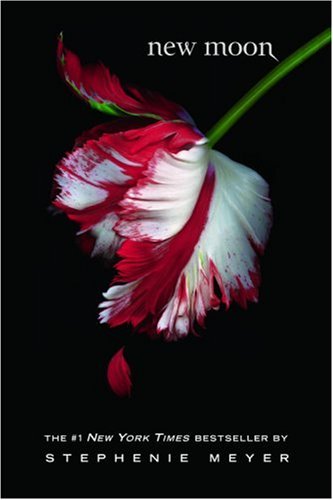
Erotic re-imaginings of classic fairy tales have been done before – Anne Rice’s Beauty series is an extreme example, Moore and Gebbie’s Lost Girls
a graphic one. Often they retain a hint of adolescence or address issues of adolescent sexuality, which follows the folk-and-mythy analysis of these stories. They are allegorized warnings to children of what is to come. The fully adult versions, therefore, nod to the informed reader. The Twilight series, while it does toe the line of propriety by depicting adolescent sexuality, feels no need to intellectualize its smut or provide redeeming social importance, although the intensity of allusion stretches them to gothic proportions. They mash up mythology in a way that’s either entirely original or perfectly clever to any Campbellian, but which is ultimately somewhat hackneyed.
 Twilight adapts the Snow White myth in a contemporary setting and with more sex. The fantasy setting is stripped away, to some extent, so that it’s a story about a teenaged runaway from a plastic-surgery-addicted stepmother. In this version, however, the young virgin, Eva, gives the woodsman head to escape. Then she falls in with the seven dwarfs, who are fairly clean transients and day laborers, with whom she explores different sexual possibilities in cohabitation, culminating in group sex. Eventually a dealer who is ambiguously similar, but not necessarily the villainess herself, sells our heroine heroin on which she overdoses. She is rescued by a handsome EMT, but, in a twist, she hooks him on hard drugs, as well.
Twilight adapts the Snow White myth in a contemporary setting and with more sex. The fantasy setting is stripped away, to some extent, so that it’s a story about a teenaged runaway from a plastic-surgery-addicted stepmother. In this version, however, the young virgin, Eva, gives the woodsman head to escape. Then she falls in with the seven dwarfs, who are fairly clean transients and day laborers, with whom she explores different sexual possibilities in cohabitation, culminating in group sex. Eventually a dealer who is ambiguously similar, but not necessarily the villainess herself, sells our heroine heroin on which she overdoses. She is rescued by a handsome EMT, but, in a twist, she hooks him on hard drugs, as well.
 New Moon carries a more diverse selection of mythology. As the story starts, Eva is in the continual living sleep of a well-supplied junkie, supported by her dream boyfriend who steals morphine from hospitals for them both. This reframes Twilight as potentially a Sleeping Beauty story, but then it develops more towards the less-known Snow White and Rose Red. The boyfriend is arrested and Eva flees, and in one of the most preposterous fantasies of whackoff literature, her addiction to smack becomes an addiction to sex, which she spends a chapter or three overdosing on. Eva then turns lesbian and seduces a younger version of herself, Lila, a girl living with an adopted mother and so sheltered that Eva must serve to initiate her not only to pleasure but to all the workings of her own body. It’s kind of sweet, actually.
New Moon carries a more diverse selection of mythology. As the story starts, Eva is in the continual living sleep of a well-supplied junkie, supported by her dream boyfriend who steals morphine from hospitals for them both. This reframes Twilight as potentially a Sleeping Beauty story, but then it develops more towards the less-known Snow White and Rose Red. The boyfriend is arrested and Eva flees, and in one of the most preposterous fantasies of whackoff literature, her addiction to smack becomes an addiction to sex, which she spends a chapter or three overdosing on. Eva then turns lesbian and seduces a younger version of herself, Lila, a girl living with an adopted mother and so sheltered that Eva must serve to initiate her not only to pleasure but to all the workings of her own body. It’s kind of sweet, actually.

Eclipse uses the setup of Lila as Rapunzel and frames her as the protagonist of the next romance, providing more of her backstory in the process – a contemporary version of the “your firstborn for your craving” deal. Eva is supplanted with a young man who sneaks up to Lila’s room and impregnates her. Rather than being blinded when discovered by the foster mother, he is rendered impotent, but Lila, ejected by her foster mother and living with the dwarf gang, restores him with Eva’s help.
 Breaking Dawn has an unprecedented amount of plot convolution. It intersperses Lewis Carroll references and opium dreams with much more heavy-handed allegory, and follows a series of more BDSM power plays that pit the two heroines against each other.
Breaking Dawn has an unprecedented amount of plot convolution. It intersperses Lewis Carroll references and opium dreams with much more heavy-handed allegory, and follows a series of more BDSM power plays that pit the two heroines against each other.
All in all, a bit generic, not exactly high literature, and not as extreme as it could be, but dark and clever and quite gorgeously written.